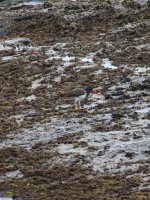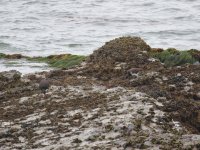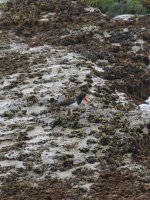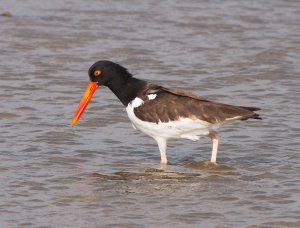John T in AZ
Member

I took these photos September 1st, 2023 at the Point Loma Tide Pools in San Diego (eBirds refers to it as Cabrillo NM--tidepools).
The Oystercatcher in question was with the Black Oystercatcher the entire time we observed it. Different species do congregate together of course.
At first I thought it was an American Oystercatcher. Thinking back, I spoke to some birders on the trail who were looking for a hybrid that they heard/read about. Perhaps this was it.
After reviewing eBirds for September and the four previous months I see that there were no sightings for American Oystercatchers. However, four of those months reported sightings of a hybrid.
Could this be an American x Black Oystercatcher Hybrid?
John T
The Oystercatcher in question was with the Black Oystercatcher the entire time we observed it. Different species do congregate together of course.
At first I thought it was an American Oystercatcher. Thinking back, I spoke to some birders on the trail who were looking for a hybrid that they heard/read about. Perhaps this was it.
After reviewing eBirds for September and the four previous months I see that there were no sightings for American Oystercatchers. However, four of those months reported sightings of a hybrid.
Could this be an American x Black Oystercatcher Hybrid?
John T








